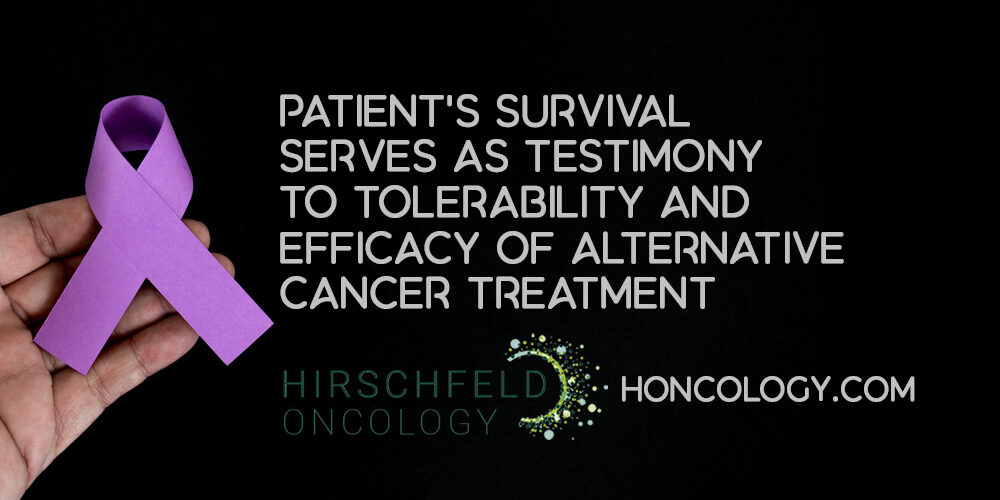Advancing Cancer Care with Compassion and Innovation
Navigating the Complexities of Modern Cancer Treatment
Cancer treatment today stands at the crossroads of remarkable scientific advances and the enduring challenge of managing complex side effects. While therapies like immunotherapy, targeted drugs, and CAR T-cell treatments have revolutionized care and improved survival rates, patients often face side effects such as fatigue, nausea, immune-related inflammation, and neurotoxicity. These side effects can significantly impact quality of life and complicate treatment adherence.
The Vital Importance of Side Effect Management
Effective management of treatment-related side effects is essential to maintain patients’ well-being and enable continued cancer therapy. Approaches include medication to ease symptoms, dose adjustments, and supportive care strategies such as acupuncture, exercise, and pain management. Recognizing and proactively addressing issues like cytokine release syndrome, skin reactions, or cognitive changes helps reduce hospitalizations and enhances comfort. This comprehensive focus helps patients complete their treatment regimens more successfully.
Hirschfeld Oncology’s Holistic Approach
Hirschfeld Oncology leads the way by integrating compassionate patient-centered care with cutting-edge treatments. The center emphasizes personalized therapy plans that consider genetic tumor profiles and immune system status to optimize efficacy and minimize harm. Alongside advanced therapies, Hirschfeld Oncology prioritizes symptom monitoring, patient education, and supportive services to improve treatment experiences. This commitment redefines cancer care by blending innovation with dedication to patient quality of life, ultimately advancing outcomes in the fight against cancer.
Leadership and Vision at Hirschfeld Oncology

Who leads the medical team at Hirschfeld Oncology?
At Hirschfeld Oncology, the medical team is led by Dr. Azriel Hirschfeld, a board-certified expert specializing in medical oncology, hematology, and internal medicine. Dr. Hirschfeld’s extensive experience spans numerous cancer types, including pancreatic, bile duct, colon, stomach, ovarian, and breast cancers.
Team Expertise and Multidisciplinary Care
The team at Hirschfeld Oncology involves specialists from various fields to ensure comprehensive care. This multidisciplinary approach allows for integration of surgical, radiation, and medical oncology experts. The goal is to tailor treatment plans for each patient’s unique cancer profile.
Commitment to Personalized Treatments
Dr. Hirschfeld emphasizes personalized medicine, incorporating the latest advances like genetic tumor analysis and precision oncology to select targeted cancer therapies. This precision oncology approach aims to maximize effectiveness and minimize side effects by focusing on treatments tailored to the patient's tumor characteristics.
Combining Traditional and Innovative Therapies
The clinic blends conventional cancer treatments like chemotherapy and surgery with cutting-edge methods such as immunotherapy and targeted drugs. This thoughtful combination seeks to improve outcomes, reduce toxicity, and address cancer cells more effectively. Efforts also include incorporating clinical trials for pioneering therapies when appropriate.
Together, these efforts under Dr. Hirschfeld’s leadership reflect a forward-looking vision dedicated to offering patients advanced, individualized cancer care.
Innovative Strategies Enhancing Cancer Care at Hirschfeld Oncology

What innovative strategies does Hirschfeld Oncology use to enhance cancer care?
Hirschfeld Oncology is pioneering a range of advanced approaches to improve cancer treatment outcomes and patient quality of life. Central to their strategy is the development of personalized cancer vaccines and precision oncology treatment plans tailored to each patient’s unique tumor biology and genetic profile. This precision medicine approach ensures therapies are more effective and reduce harm to healthy tissues.
The practice embraces novel therapeutic combinations such as low-dose and metronomic chemotherapy, which can minimize side effects while maintaining cancer control. These regimens are often combined with immunotherapy techniques that boost the body's natural defenses against cancer cells, enabling a more targeted and less toxic attack on tumors.
Additionally, Hirschfeld Oncology employs neoadjuvant immunotherapy — treatment given before surgery — and intraoperative local therapies during surgery to maximize tumor eradication. These methods can reduce recurrence and improve survival rates.
To enhance drug delivery and overcome resistance, they integrate advanced systems like nanoparticles and stem cell therapies. Nanoparticles allow precise delivery of drugs directly to cancer cells, sparing healthy tissue and reducing systemic toxicity. Stem cell therapies are explored for their capacity to repair tissue and support immune responses against cancer.
Together, these innovative strategies represent a comprehensive and forward-thinking approach at Hirschfeld Oncology, combining cutting-edge science with compassionate patient care to transform cancer treatment.
Integrating Standard and New Treatments for Optimal Outcomes
How does Hirschfeld Oncology balance standard therapies with new treatments in their approach to cancer care?
Hirschfeld Oncology integrates traditional cancer treatments like chemotherapy treatments, radiation therapy in cancer, and surgery for cancer with cutting-edge therapies such as targeted therapies, immunotherapies, and antibody-drug conjugates (ADCs) to optimize patient outcomes. Their approach involves using precision oncology by analyzing the genetic and molecular profile of tumors, enabling personalized therapies that specifically target cancer cells while minimizing harm to healthy tissue.
This strategy helps reduce side effects commonly associated with conventional treatments, improving patient quality of life. Alongside treatment, Hirschfeld Oncology emphasizes comprehensive supportive care, including medications, lifestyle recommendations, and management of symptoms like fatigue, nausea, or pain, to address the diverse needs of patients.
Clinical trial participation plays a vital role in their model, ensuring access to the latest therapies including liquid biopsies and neoadjuvant immunotherapy, and contributing to rapid translation of research breakthroughs into practice. The interdisciplinary team collaborates to tailor treatment plans that balance established protocols with novel interventions such as personalized cancer vaccines, mRNA cancer vaccines, and intraoperative local therapies, ensuring each patient receives evidence-based and innovative care for the best possible outcomes.
Collaborative Multidisciplinary Care Ensuring Holistic Management

How does Hirschfeld Oncology's medical team collaborate to provide comprehensive cancer treatment?
Hirschfeld Oncology employs a truly multidisciplinary team to deliver comprehensive cancer care. This team includes physicians, nurses, pharmacists, social workers, dietitians, and other specialized healthcare professionals working together seamlessly.
Team composition and collaboration
The collaboration spans across multiple disciplines, enabling the creation of personalized treatment plans that consider each patient’s unique medical condition alongside their emotional and social needs. This ensures that care is not only focused on combating the disease but also enhancing overall well-being.
Personalized treatment planning
By leveraging expertise from various specialists, Hirschfeld Oncology tailors therapies to individual patients, optimizing treatment effectiveness while minimizing side effects. This includes approaches such as precision oncology, targeted cancer therapies, and personalized cancer vaccines.
Addressing emotional and social patient needs
Social workers and counselors assist patients with emotional support and help navigate social challenges during treatment. Dietitians manage nutrition plans to support recovery and quality of life, complementing supportive and palliative care to manage side effects and improve quality of life.
Team communication and patient empowerment
Effective communication among team members reduces treatment delays and improves patient safety. Dr. Hirschfeld champions patient empowerment through shared decision-making, encouraging open dialogue to build trust and confidence in the care process. This patient-centered approach aligns with current trends in personalizing cancer treatment.
This collaborative and holistic approach ensures that every aspect of the patient's cancer journey is managed thoughtfully and comprehensively.
Patient Advocacy: Empowering Through Education and Support
What role does patient advocacy play at Hirschfeld Oncology?
At Hirschfeld Oncology, patient advocacy is central to delivering personalized cancer therapies and comprehensive care. The advocacy team focuses on educating patients about their treatment options and providing support tailored to their unique circumstances. This is especially important for women who are considering pregnancy after cancer treatment, helping them navigate complex decisions with clarity and confidence.
Why are fertility and family planning considerations important in cancer treatment?
Cancer treatments can affect fertility, making family planning a crucial discussion point. Hirschfeld Oncology recognizes this and integrates fertility preservation options and reproductive counseling into patient care. Patients receive guidance on timing, risks, and available technologies, ensuring that reproductive goals are respected alongside cancer control.
How does multidisciplinary guidance incorporate clinical guidelines?
The center follows evidence-based protocols, such as those from the International Federation of Gynecology and Obstetrics (FIGO), which recommend multidisciplinary care for cancer patients contemplating pregnancy. This approach brings together oncologists, reproductive specialists, and supportive care professionals to deliver coordinated, guideline-aligned care consistent with clinical trials in cancer therapy.
How does advocacy empower patients to make informed decisions?
By providing clear information on cancer treatment advances, potential side effects, fertility impact, and supportive services, Hirschfeld Oncology empowers patients. This education facilitates shared decision-making, ensuring patients feel confident and supported throughout their cancer journey and related life choices like family planning.
Innovations in Immunotherapy: CAR T-Cell Therapy and Beyond
How does CAR T-cell therapy work?
CAR T-cell therapy is a cutting-edge immunotherapy that modifies a patient's own T cells to recognize and attack cancer cells. The process involves collecting T cells via leukapheresis, genetically engineering them to produce chimeric antigen receptors (CARs) that can bind to specific cancer antigens, expanding these modified cells in the lab, and then infusing them back into the patient. Once inside the body, these CAR T cells multiply and selectively target tumor cells expressing the chosen antigen.
What clinical successes and approvals have CAR T therapies achieved?
Since its first FDA approval in 2017 for pediatric acute lymphoblastic leukemia (ALL), CAR T-cell therapy has expanded to treat various blood cancers including lymphomas, multiple myeloma, and B-cell ALL. Some clinical trials have demonstrated high remission rates, such as nearly 80% cancer elimination in certain lymphoma patients. Therapies like tisagenlecleucel (Kymriah) have offered long-term remission and potential cures, especially in cases of relapsed or refractory leukemia.
What common and serious side effects are associated with CAR T-cell therapy?
The most frequent side effects include cytokine release syndrome (CRS), characterized by fever, chills, difficulty breathing, and low blood pressure, and immune effector cell-associated neurotoxicity syndrome (ICANS), which can cause confusion, seizures, and headaches. These side effects are managed using medications such as tocilizumab, corticosteroids, and anakinra. Other risks include allergic reactions, blood count abnormalities, increased infection risk, and rare secondary malignancies. Patients require close monitoring in specialized centers for several weeks post-infusion.
What ongoing research aims to reduce toxicity and broaden CAR T-cell applications?
Researchers are developing next-generation CAR T therapies designed to minimize side effects and improve safety. Innovations include 'off-the-shelf' CAR T products using donor cells to increase availability and multi-CAR strategies targeting multiple antigens to overcome tumor resistance. There is also active investigation into expanding CAR T therapy to solid tumors, addressing challenges like tumor heterogeneity and immune suppression in the tumor environment. Efforts to integrate CAR T earlier in treatment courses are underway, potentially sparing patients from more aggressive chemotherapy. Clinical trials and programs led by institutions such as the National Cancer Institute continue to accelerate these advancements.
Emerging Precision Approaches to Minimize Side Effects
Personalized cancer vaccines using mRNA technology
Personalized cancer vaccines using mRNA technology are a groundbreaking approach being tested to train the immune system to specifically target cancer cells. These vaccines aim to reduce cancer recurrence by boosting immune responses while minimizing side effects commonly seen with traditional chemotherapy. Ongoing clinical trials across Europe are evaluating their effectiveness with promising early results.
Precision oncology using genetic tumor analysis
Precision oncology involves detailed genetic tumor analysis and molecular profiling of tumors to develop treatments tailored to individual patients. By targeting the unique genetic mutations driving a person's cancer, therapies can be more effective and less toxic, sparing healthy cells and decreasing side effects.
AI in cancer risk profiling and medical image analysis
Artificial intelligence technologies are increasingly used to analyze medical images and clinical data. For example, AI in cancer screening models can predict lung cancer up to six years before onset using low-dose CT scans. This capability enables earlier intervention, which can reduce the need for aggressive treatments and associated side effects.
Liquid biopsies for less invasive cancer diagnosis
New diagnostic tools such as liquid biopsies use blood samples to detect cancer markers, offering a less invasive alternative to tissue biopsies. This method allows for earlier and safer cancer detection and monitoring while sparing patients from more invasive procedures.
These emerging precision medicine innovations collectively aim to improve cancer outcomes by enabling earlier, tailored treatments that minimize harmful side effects and enhance patients' quality of life.
Targeted Therapies and Antibody-Drug Conjugates: Balancing Efficacy and Safety

What molecules and pathways do targeted cancer therapies focus on?
Targeted therapies disrupt specific molecules and signaling pathways crucial for tumor growth and survival, leading to more precise treatment. These include kinase pathways and growth factor receptors. Examples include small molecule inhibitors such as gefitinib and erlotinib, and monoclonal antibodies like rituximab and trastuzumab (small molecule targeted agents, monoclonal antibodies in cancer treatment, targeted therapies).
How are antibody-drug conjugates (ADCs) used clinically, and what side effects do they cause?
ADCs combine antibodies with cytotoxic drugs to specifically target cancer cells, extensively used in breast cancer and other cancers. As of 2024, over 15 ADCs have FDA approval. Common side effects include eye and vision problems, particularly corneal pseudomicrocysts causing blurry vision and eye pain, which are reversible but may take months to resolve. See more about antibody-drug conjugates (ADCs) and managing vision problems (Antibody-drug conjugates (ADCs) in cancer treatment).
How are vision and skin toxicities from these treatments managed?
Vision side effects are managed through collaborative care by ophthalmologists and oncologists with routine eye screenings to prevent delays in treatment. Skin toxicities from immunotherapy, ADCs, and targeted therapies often respond to topical treatments and dermatologic consultation. More details on managing skin and vision side effects from cancer therapies are available (Skin side effects from cancer immunotherapies, Collaborative care for vision side effects in cancer patients.
What supportive care strategies help manage adverse effects?
Management includes medication adjustments and supportive care measures like dose modifications and symptom-targeted treatments. Monitoring for heart damage, managing fatigue, and preventing infections are essential. Additionally, interventions like physical activity and acupressure may alleviate some symptoms such as pain and fatigue. For comprehensive guidance on cancer treatment side effects and supportive care and complementary treatments such as acupressure and physical activity, see these resources (Cancer treatment side effects, Complementary treatments for cancer symptoms).
These approaches aim to maximize treatment efficacy while minimizing harm to patients, ensuring continued access to lifesaving therapies with manageable side effect profiles.
Supportive and Complementary Approaches to Side Effect Management
Pharmacological interventions for hormonal therapy side effects
Hormonal therapies for breast cancer, such as tamoxifen and anastrozole for breast cancer prevention, often cause side effects including hot flashes, joint pain, and bone loss. New medications like NK3 antagonists (fezolinetant, elizanetant) provide rapid relief from hot flashes without the need for liver monitoring. Duloxetine effectively reduces aromatase inhibitor-induced joint pain and stiffness. Additionally, small-dose vaginal estrogen is a safe option to manage vaginal dryness during hormonal treatment. Bone loss can be addressed by measuring bone density, recommending weight-bearing exercises, and treating with calcium, vitamin D, and anti-resorptive drugs such as zoledronate, which also reduce fracture risk and cancer recurrence.
Non-pharmacologic measures like acupuncture and exercise
Complementary therapies, including acupuncture, have demonstrated effectiveness in reducing chemotherapy-induced nausea and certain types of pain when provided by licensed practitioners using sterile techniques. Exercise is shown to help manage fatigue and stress, potentially improving overall quality of life and survival rates. Practices such as yoga, tai chi, meditation, and relaxation techniques aid in alleviating anxiety, improving sleep, and enhancing mood. Massage therapy helps relieve muscle tension and pain but requires precautions in patients with low blood counts or bone issues. For more information on these complementary therapies, see Complementary treatments for cancer symptoms.
Management of fatigue, nausea, and cognitive changes
Fatigue is common during and after cancer treatment; management includes strategies such as physical activity, proper rest, and cognitive aids like note-taking. Nausea can be controlled pharmacologically and through supportive methods such as relaxation techniques, hypnosis, and acupuncture. "Chemo brain" or cognitive impairment is addressed by ensuring adequate sleep, prioritizing tasks, and using coping strategies to enhance concentration and memory. For detailed guidance on managing side effects, see Cancer treatment side effects.
Role of mental health and rehabilitation therapies
Mental health support via cognitive behavioral therapy (CBT) and counseling improves sleep disturbances and addresses anxiety and depression. Hypnosis and music therapy have been shown to lower anxiety, pain, and nausea. Rehabilitation therapies incorporating exercise and relaxation improve physical function and psychological well-being, contributing to enhanced quality of life during and after cancer treatment. Further information is available at Supportive and palliative cancer care.
Cutting-Edge Technologies Improving Treatment Tolerability

Accelerated infusion protocols reducing treatment time
New cancer therapies are increasingly adopting accelerated infusion protocols that significantly cut treatment times. For example, the NHS in England introduced a seven-minute cancer treatment injection using drugs like Atezolizumab (Tecentriq) NHS treatment. This rapid administration not only enhances patient convenience but also improves treatment efficiency and healthcare resource utilization, potentially reducing side effects associated with prolonged infusion times.
Nanoparticle delivery systems enhancing drug targeting
Nanomedicine is a growing field improving drug delivery, minimizing off-target effects, and increasing tolerability. Nanoparticles, including liposomes and polymer nanoparticles, inorganic nanomaterials, and polymer-based carriers, are engineered to deliver chemotherapy and immunotherapy agents directly to tumor cells. This targeted approach spares healthy tissues, reduces systemic toxicity, and improves patient comfort during treatment.
Robotic minimally invasive surgeries and recovery
Robotic-assisted minimally invasive surgeries have revolutionized tumor removal procedures by reducing incision size and tissue damage. These techniques, like those pioneered at Memorial Sloan Kettering for spinal tumors, allow for faster recovery, less postoperative pain, and shorter hospital stays. The precision of robotics contributes to fewer complications and better overall patient outcomes compared to traditional open surgeries. For more about top cancer treatment advances at MSK in 2024.
AI-driven tools for treatment planning and monitoring
Artificial intelligence is transforming cancer care by enhancing treatment planning and monitoring. AI models analyze imaging data and genetic information to predict cancer risk and tailor personalized therapies. Tools like the MIT lung cancer prediction model enable early interventions that can be less intensive and more tolerable. AI also assists clinicians in managing side effects and optimizing therapy schedules to improve patients' quality of life.
Collectively, these cutting-edge technologies play a pivotal role in making cancer treatments more patient-friendly by reducing side effects, shortening treatment durations, and improving precision.





.png)


.png)
.png)




